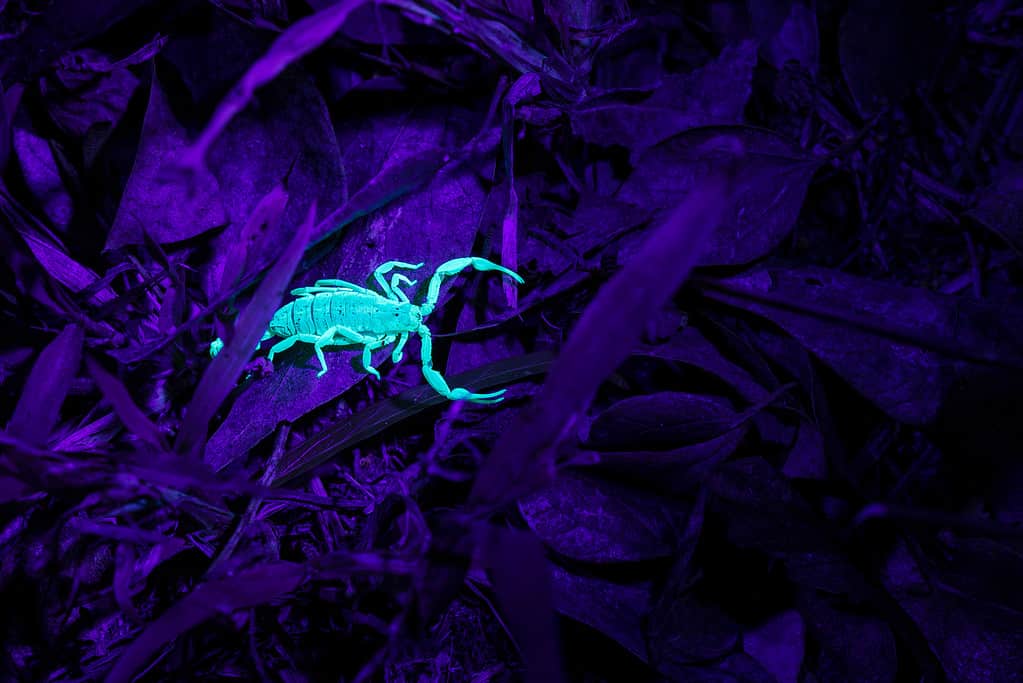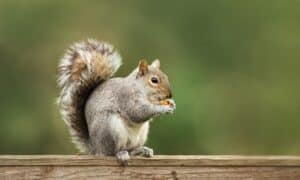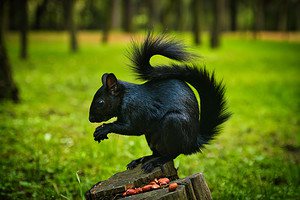The scientific name for glowing in the dark is biofluorescence, and a surprising number of animals do it. Many of us will have seen it happening in invertebrates and fish, but finding out that some mammals can do it is a surprise! This extraordinary clip shows that many furry creatures, including flying squirrels, wombats, and African springhares, glow under ultraviolet (UV) light. Moreover, did you know that puffin beaks, owl wings, and budgerigar face feathers also glow different colors in UV light? Take a good look at this!
Watch the Amazing Clip Now
How Do Animals Glow in the Dark?

Animals may glow in the dark to find a mate or for communication.
©Danita Delimont/Shutterstock.com
Glowing in the dark, or biofluorescence, occurs when UV or blue light (which have higher energy wavelengths) are absorbed by a surface and reemitted as lower energy wavelengths to appear to glow. The fluorescent colors include blues, greens, and reds. For many species, we don’t yet know precisely how this happens. It may be connected with proteins, pigments, metabolites, or minerals. Scientists are also not sure why animals do this. It may be connected with communication, searching for a mate, camouflage, or perhaps it serves no useful function! But we know that loads of rabbits do it, including chameleons, parrots, penguins, and a handful of amphibians and mammals. Recently, it was detected in three species of New World flying squirrel, namely Glaucomys oregonensis, Glaucomys sabrinus, and Glaucomys volans).
Where Do New World Flying Squirrels Normally Live?
So, where would you have to go to spot a glow-in-the-dark flying squirrel? One species exhibiting this trait is Glaucomys volans, better known as the southern flying squirrel. It’s found throughout the eastern half of the United States but can be spotted as far west as the Great Plains. It is also found north into Canada and as far south as Honduras.
Their preferred habitat is temperate to sub-temperate deciduous and mixed forests. They are pretty happy in many types of forests, although they prefer beech-maple, oak-hickory, and poplar. They create their nests in trees from leaves or find cavities to hide out in. Abandoned woodpecker holes are ideal!
How Do Flying Squirrels Normally Behave?
Glowing in the dark may be helpful in some way to these squirrels because they are nocturnal. They travel along the ground and forage for food on the top of logs. During the colder months, they are only active shortly after dusk and just before dawn. They don’t come out of their nests for several days when it is very cold!
They are social animals who gather together in one nest in the winter. They also communicate with each other through ultrasonic frequencies that sound similar to that of a bird.
The photo featured at the top of this post is © Agnieszka Bacal/Shutterstock.com
Thank you for reading! Have some feedback for us? Contact the AZ Animals editorial team.






